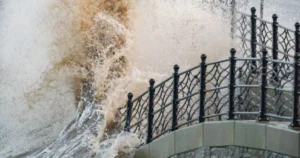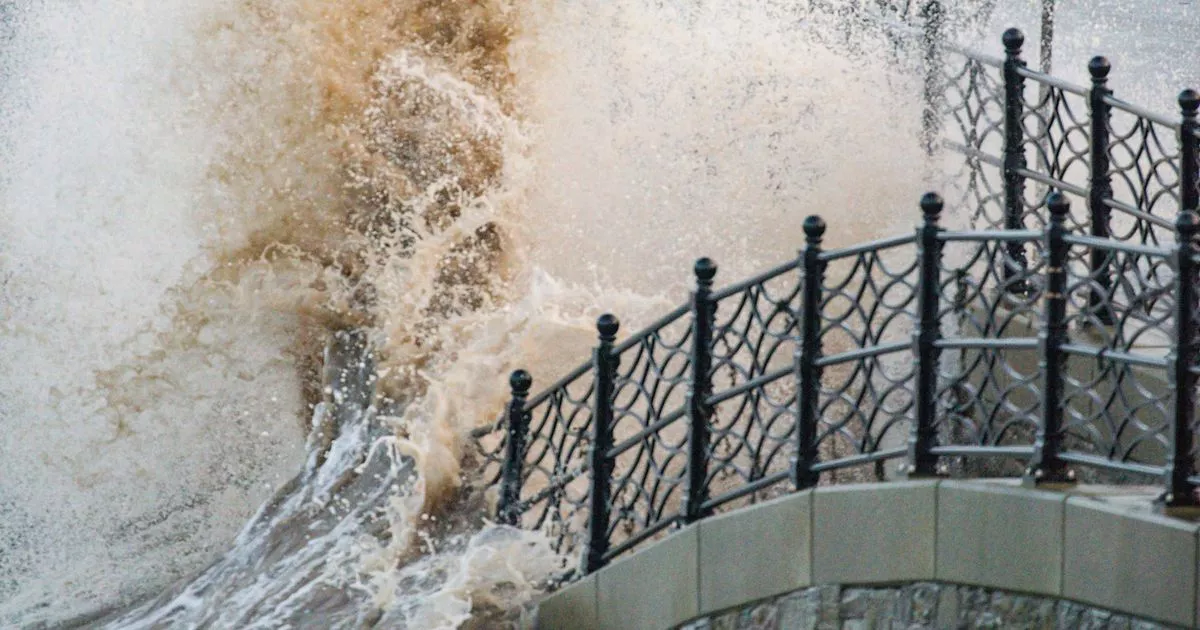BBC News coverage of Storm Darragh, which brought a rare red “danger-to-life” warning to Bristol and surrounding areas over the weekend of December 6–7, 2024.
—
🌪️ What is Storm Darragh?
Storm Darragh (known as Storm Xaveria in Germany) was part of the 2024–25 European windstorm season, officially named by the UK Met Office on 5 December 2024 .
It evolved into an extratropical cyclone hitting northwestern Europe with powerful wind gusts and heavy rainfall.
The storm impacted several countries, including:
UK
Ireland
France
Belgium
The Netherlands .
—
⚠️ Red “Danger to Life” Warning Issued for Bristol
On 6 December, Met Office escalated warnings:
A rare red wind warning for much of south-west England and south Wales, stretching from Anglesey to the Severn Estuary, Bristol Channel, Somerset, and north Devon, effective 3 a.m.–11 a.m. on 7 December .
Surrounding areas remained under amber (Serious) and yellow (Be aware) wind alerts .
Why “red”? It’s the highest alert indicating an immediate risk to life from flying debris, structural collapse, and travel chaos.
—
🚨 Emergency Alerts to Millions
Around 3 million people in Wales and South-West England—including the Bristol region—received Emergency Alerts on their mobile phones, marking the largest nationwide deployment of the system since its launch in early 2023 .
The alerts explicitly stated: “danger to life” if people didn’t stay indoors.
Such alerts aim to target only those in the highest-risk zones and feature loud tones that startled many .
—
📹 BBC Video Coverage
The BBC captured impactful footage as storm-force winds battered Bristol:
This clip illustrates dramatic scenes of coastal swells, wind-blown debris, and local authorities urging residents to limit travel, secure loose objects, and avoid high-exposure zones.
—
🌬️ Weather and Wind Impacts
Gusts peaked at approximately 93 mph (150 km/h) in parts of southwest England .
Coastal towns around the Bristol Channel experienced unusually high waves funneled by the storm .
Related phenomena included:
Reports of mini-tornadoes near Newcastle and West Yorkshire, upending trees, damaging cars, and loosening roof tiles .
Severe rain and flooding, especially near the River Wye in Builth Wells and Mold in Wales .
A tragically high toll: at least two fatalities in the UK and four including France and Ireland, along with many injuries and structural damage .
—
🚆 Travel, Transport, and Power Disruptions
Airlines, railways, roads, and bridges all suffered major interruptions:
Airports affected: Disruptions across Bristol, Cardiff, Heathrow, Belfast, and Manchester .
Rail services: Suspended in areas of France; cross-Channel and UK regional services delayed due to fallen trees and debris .
Bridges and roads:
Severn crossings (Prince of Wales, QEII, Severn Bridge) shut due to high wind risk .
Local roads closed near fallen branches and flooding.
Electricity outages:
Over 1.8 million UK homes were temporarily without power, especially in Wales and the South West .
Even by 10 December, nearly 21,000 properties remained offline .
Communication impact:
Extensive telecom infrastructure damage in Wales—hundreds of overhead cables and telegraph poles were downed .
—
🏠 Damage to Buildings & Infrastructure
Significant structural damage was reported, including:
Roofs ripped off in Pentre Baptist Church (Mochdre), New Quay nursery, Porthcawl housing block, and various residential zones .
A block of flats and community buildings sustained serious damage.
Port of


